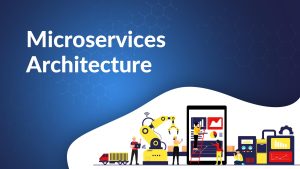
A Path to Modernization
Businesses relying on outdated systems often struggle with inefficiencies, security risks, and integration challenges. As technology advances, maintaining legacy software becomes increasingly costly and complex. Migrating to Spagic, an open-source integration framework, offers a structured approach to modernization, enabling organizations to automate workflows, enhance interoperability, and improve scalability.
A successful migration requires careful planning, ensuring minimal disruption while preserving business continuity. Whether transitioning from monolithic architectures, custom-built applications, or outdated middleware, Spagic provides a flexible solution that supports seamless integration with modern applications. By understanding key migration strategies, businesses can unlock the full potential of their IT infrastructure.
This article examines the critical steps in migrating legacy systems to Spagic. From assessing system compatibility to executing a phased migration plan, each section offers insights into best practices for a smooth transition. By leveraging Spagic’s capabilities, organizations can future-proof their operations and streamline digital transformation efforts.
Understanding the Challenges of Legacy Systems
Older IT systems often struggle to keep pace with modern business needs. As software ages, compatibility issues arise, making it harder to integrate with newer platforms. Many legacy systems were designed before cloud computing, API-driven architectures, or automation became industry standards.
Security vulnerabilities also pose significant risks. Outdated systems may lack regular updates, leaving organizations exposed to cyber threats. Compliance with modern security protocols becomes difficult when legacy applications fail to support encryption, authentication, or access controls.
Additionally, maintenance costs can skyrocket. Older systems often require specialized expertise, making upgrades time-consuming and expensive. Hardware dependencies further complicate modernization efforts, as outdated infrastructure may not support newer software solutions.
Why Spagic is an Ideal Solution for Migration
Spagic offers a robust middleware platform that facilitates integration between diverse applications, databases, and external systems. It simplifies communication between legacy software and modern architectures, enabling businesses to transition without completely overhauling their infrastructure.
One of Spagic’s key strengths is its modular design. Organizations can migrate components gradually, minimizing downtime and operational risks. By implementing Spagic’s workflow engine, message brokers, and API management capabilities, businesses can extend the lifespan of existing systems while modernizing core functionalities.
Flexibility is another advantage. Whether deployed on-premises or in a cloud environment, Spagic adapts to different IT landscapes. Its open-source nature allows customization, ensuring compatibility with specific business needs while reducing licensing costs.
Assessing Legacy System Compatibility
Before migration, organizations must evaluate their existing IT environment. Identifying dependencies, data structures, and integration points is essential for a seamless transition. A thorough assessment helps determine whether a full or partial migration is the best approach.
Understanding how legacy applications interact with external systems is crucial. If direct integration is not feasible, middleware solutions like Spagic can serve as a bridge, ensuring smooth data exchanges without disrupting operations.
Additionally, performance benchmarks should be established. Analyzing response times, system loads, and processing speeds ensures that the new environment meets operational expectations. These insights guide configuration adjustments, optimizing Spagic for maximum efficiency.
Planning a Phased Migration Approach
A gradual transition minimizes risks associated with migrating business-critical systems. Instead of replacing legacy applications all at once, organizations can implement a phased approach, testing Spagic’s capabilities incrementally.
The first phase typically involves setting up Spagic as an intermediary layer, allowing legacy and modern applications to coexist. Initial workflows and integrations are tested before full-scale adoption. This ensures that any compatibility issues are addressed before mission-critical functions are migrated.
Once initial tests are successful, additional services can be transferred. Data migration, API integrations, and workflow automation should be implemented progressively, ensuring stability at each stage. This approach provides flexibility, allowing businesses to adapt as needed.
Ensuring Data Integrity and Security
Migrating data from legacy systems requires strict measures to maintain accuracy and security. Ensuring consistency across databases, preventing data loss, and verifying access controls are key priorities.
Organizations should implement validation processes to detect discrepancies between old and new systems. By running parallel tests, businesses can identify and resolve errors before fully transitioning data operations to Spagic.
Security protocols must also be updated. Spagic’s support for encryption, authentication, and role-based access control ensures that migrated data remains protected. By integrating secure API gateways, businesses can safeguard information while enabling seamless communication between applications.
Automating Workflows for Operational Efficiency
One of Spagic’s strengths lies in its ability to automate repetitive tasks. By leveraging its workflow engine, organizations can replace manual processes with event-driven automation, reducing human intervention and increasing efficiency.
For instance, order processing, customer notifications, and data synchronization can be automated, ensuring real-time updates across systems. This improves response times and enhances service delivery without requiring significant manual effort.
Automation also helps in maintaining system health. Scheduled monitoring tasks, error detection mechanisms, and performance tracking ensure that Spagic remains optimized, reducing maintenance overhead in the long run.
Optimizing API Management for Seamless Integration
Legacy systems often struggle with API compatibility, making integration with newer applications challenging. Spagic simplifies API management by providing tools for defining, securing, and monitoring API interactions.
By exposing legacy functionalities as APIs, businesses can extend system capabilities without modifying core applications. Spagic’s API gateway allows controlled access, ensuring that third-party integrations remain secure and efficient.
Additionally, API logging and monitoring enable real-time tracking of service performance. Organizations can analyze request patterns, detect anomalies, and optimize API responses to improve overall system reliability.
Monitoring Performance and Scalability
Once migration is complete, ongoing monitoring ensures that Spagic performs as expected. Establishing performance benchmarks, analyzing system logs, and identifying potential bottlenecks help maintain stability.
Scalability considerations should also be addressed. As business needs evolve, Spagic can be fine-tuned to accommodate increased workloads. Cloud-based deployments allow for dynamic scaling, ensuring that the platform remains responsive under varying demands.
Regular updates and patches further enhance reliability. By staying up to date with Spagic’s latest features, organizations can continually improve system performance and maintain compatibility with emerging technologies.
A Future-Ready Integration Strategy
Migrating legacy systems to Spagic is a strategic move toward modernization. By leveraging Spagic’s middleware capabilities, organizations can overcome integration challenges, improve security, and automate operations without disrupting existing workflows.
A well-planned migration ensures minimal downtime while delivering long-term benefits. Businesses that adopt Spagic gain a flexible, scalable, and cost-effective solution for managing enterprise-wide integrations.
By embracing modernization, organizations future-proof their IT infrastructure, enabling seamless collaboration between legacy and next-generation applications. With Spagic, businesses can achieve greater efficiency while maintaining adaptability in a rapidly changing technology landscape.

